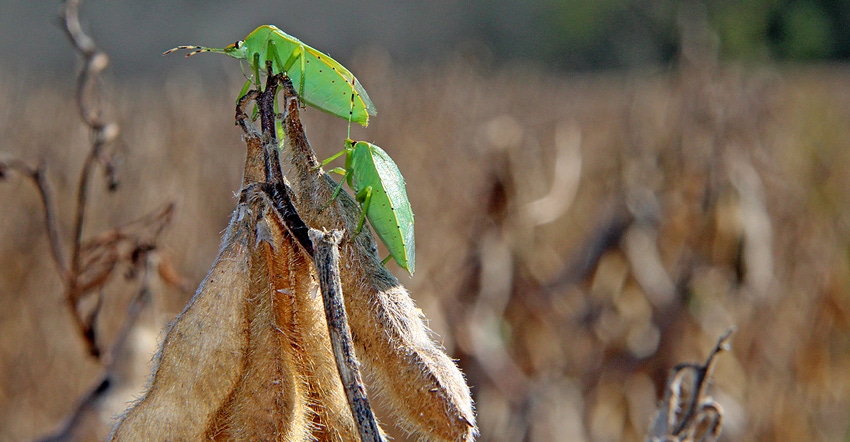
Soybean loopers, green cloverworms, pod worms and stinkbugs can affect the reproductive growth system of soybeans in the Midsouth. Don Johnson, technology service manager for FMC, discussed controlling these insects in soybean acres, during a recent FMC webinar. He also discussed the product, Elevest, and how it can help soybean farmers fight key pests in the growing season.
Soybean loopers, green cloverworms
Elevest is said to enhance the selectivity of the Lepidopteran insects.
"It has a fast knockdown from the bifenthrin while the Rynaxypyr active will give you the longer residual activity," Johnson said.
Examining soybean looper trials across eight states, Vantacor, Elevest, and Besiege had similar control while Intrepid Edge had less control.
"All products performed better than the untreated check, which was the number of larvae per 25 sweeps," he said.
Looking at green cloverworm in another data trial, Elevest performed well and had more control than Besiege. Vantacor, Elevest, and Besiege all provided good control from the research data out of Virginia Tech, North Carolina State University, University of Georgia, and Clemson University.
"Jeremy Green's trial at Clemson University looked at the percentage of defoliation in soybeans for a combination of soybean loopers and green cloverworms, 28 days after treatment," Johnson said.
The untreated was 34% defoliated while the Intrepid Edge was 23% defoliated. The Vantacor at 1.7 ounces was 9% defoliated.
"We have seen this year in and year out when you start getting out in the days after treatment," he said. "The residual activity of Vantacor performed well and corrects a lot of problems that can happen from insect populations."
Podworms and stinkbugs
In 2020 data from Don Cook with Mississippi State University, podworm control in soybeans was examined across one trial.
"Vantacor at 1.7 ounces, Elevest at seven ounces, and Besiege at 10 ounces all performed well, and they did better than the Intrepid Edge at four ounces in the trial," Johnson said.
From research at the University of Tennessee, a trial looked at green stinkbugs and soybean loopers.
"Five days after application, Elevest at 6.7 ounces and 9.6 ounces performed the best against both pests," he said. "Elevest at 6.7 ounces plus Acephate at 0.75 pounds also performed just as well."
Besiege at 7.2 ounces performed just as well as Elevest, at 6.7 ounces, when it came to controlling soybean looper. Both Besiege and Acephate at 0.75 pounds gave adequate control for both pests, while Brigade at 6.4 ounces, controlled stinkbugs well but had less control with soybean loopers compared to the other products.
"Moving on to Sebe Brown's work in Louisiana, a graph shows the percent control of total stinkbugs (green, brown, and redbanded) seven days after application," Johnson said. "The 6.7 ounce rate of Elevest had 11% control. While at 9.6 ounces, Elevest had 27% control. Besiege, at 7.2 ounces, had 13% control."
Acephate at the standard rate and Brigade at 6.4 ounces performed equally well at 42% and 41% control respectively. Elevest at 6.7 ounces plus Acephate at 0.75 pounds had 87% control seven days after application.
"The key objective is having good application coverage in the fields," Johnson said. "We need to make sure we control these pests, but we also need to remember to check our thresholds to know what pests we are dealing with. That way, we know what product or combination of products we are going to use to keep the pests at bay."
About the Author(s)
You May Also Like




